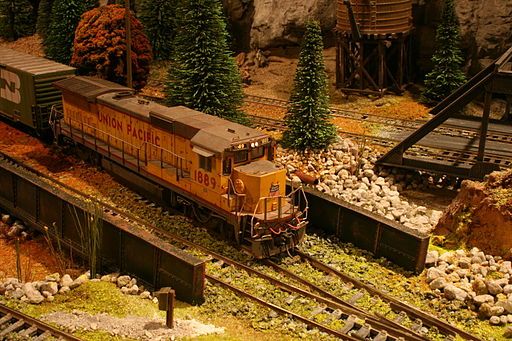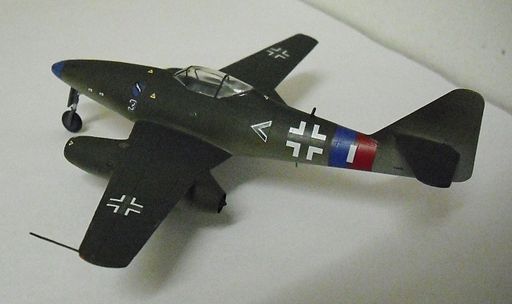
Protecting your Model Cars - Trains - and Planes
Written By John Linden
Building model cars, trains, planes, and other vehicles have always been a fairly popular hobby. In the old days, people would have to make the pieces of their model themselves. They would often whittle small pieces of wood down into cars and other vehicles. Today, however, many companies mass produce plastic and metal models that can easily be put together and painted by people of all skill levels. Many people still enjoy building these models, and many fathers take their sons to the hobby shop to buy new models that they build together.
But after putting hours of work into one of these models, the last thing you’d want is for it to get knocked off the table or shelf and break. You need to make certain that your models are protected with a custom car cover. Otherwise, you could lose all of your hard work.
- Model Building Guide – a basic introduction to model cars
- Scale Auto – getting started in modeling
- How to Build a Model – outlines the steps of preparing to put together your model car
- The Motor Museum in Miniature – this UK museum includes information on building model cars
- Classic Plastic Model Club – an online model car building club
Caring for and Moving your Models

Many of today’s model cars are made out of plastic. While this plastic may be fairly strong and durable, many of the pieces are very small and thin. It doesn’t matter how strong the plastic is—when it’s that thin, it’s going to be easy to break. Caring for your models is fairly simple: just be really careful around them!
Moving your model is one of the times it’s the most vulnerable. If you drop it, it could be all over. That’s why you should always be very careful when moving your finished model from your work area to the shelf or table where it will be displayed. Use both hands and look at the floor to make sure there’s nothing you’ll trip over. Then carefully walk to the shelf and place the model down.
Another time you may accidentally break your model is when you’re cleaning it. Models that aren’t under glass or in some other kind of case will get dusty very easily, and then they don’t look that great when you want to show them off to your friends. Some people recommend using a light feather duster to clean your models. Brush it lightly back and forth, being very careful not to move too quickly or forcefully. Others suggest using a can of compressed air so that nothing has to touch the model at all.
Model planes may be carefully hung from the ceiling. While this looks really nice, it does add an extra level of difficulty to displaying and cleaning your models. Be sure you have the hook already in place before you go to hang your model. Then carefully tie string or fishing wire around the plane, making sure its weight is supported. Some models have small holes in them to loop a string through. Once that’s done, test the string first—make sure the plane hangs level and that the string holds it. Then carefully climb up and hang it.
Models generally don’t require any other upkeep other than the occasional dusting, although the paint may fade over time if the model is in direct sunlight for long periods of time.
- Cleaning Plastic Train Cars – for the model railroad fans
- Model Car Talk – cleaning the dust off of models
- Self-Serve Cleaning Plant – an interesting way of cleaning model cars – a type of model car wash!
- Cleaning Model Trains – some ideas on keeping your trains clean
- Plastic Model Cleaning – thoughts on deep cleaning a plastic model
Protecting Your Models

There are a number of ways to protect your model cars. The first thing most people do is place them up on a high shelf. This way, children and pets can’t accidentally knock them off onto the floor. Another option is to place them on shelves with doors on them. However, young kids can figure out how to open these doors.
Some people purchase glass or clear plastic display boxes for their model cars. These small boxes come in a variety of sizes. Many have some kind of stand for models like ships or airplanes, while those made for cars may have small dips on the base for the wheels to sit down in. This helps keep the model car from moving back and forth in the box.
You can also place a small car cover over your models when you’re not displaying them. These covers will help keep dust off your model, and they will also provide a little bit of stability since the cloth is actually a bit heavier than the model. Just be careful when removing the car cloth. You don’t want it to accidentally get caught on a piece of your model and break it off.
- Model Railroad Maintenance – tips for protecting your trains
- Home Museum – protecting models
- Display Recommendations for Ships – protect your model boats
- Caring for your Models – some excellent advice that applies to all plastic models
Tips
Here are a few things to keep in mind when caring for your models:
Make sure the glue on your models is completely dry before you move it. Otherwise, parts may fall off when you pick it up. Read the directions on the glue you’ve used to know how long it needs to set.
Keep models back off the edge of shelves. Even if you don’t have children or pets, it’s possible the shelf could vibrate due to a number of reasons, causing the model to fall.
Measure your models before you purchase a display case for them. That way, you’ll be sure you have one that’s the right size.
You may display your model trains on a track you’ve built. This will take extra cleaning, especially if you’ve been small houses, trees, and other decorations. Be sure to pay special attention to any electrical parts if your train actually runs.
- Dusting Model Railways – a video on maintaining your model railway
- Tips and Tricks for Building Show-Quality Models – a video with tips on making your models look incredible
- Central Pennsylvania Model Car Club – the club offers some modeling tips for both novices and masters
- Tips, Tricks, and Tutorials – from members of the Model Cars Magazine forum
- Model Car Tips – a site with many different tips and tricks
- MegaHobby Tips – good advice for all model car builders
Updated